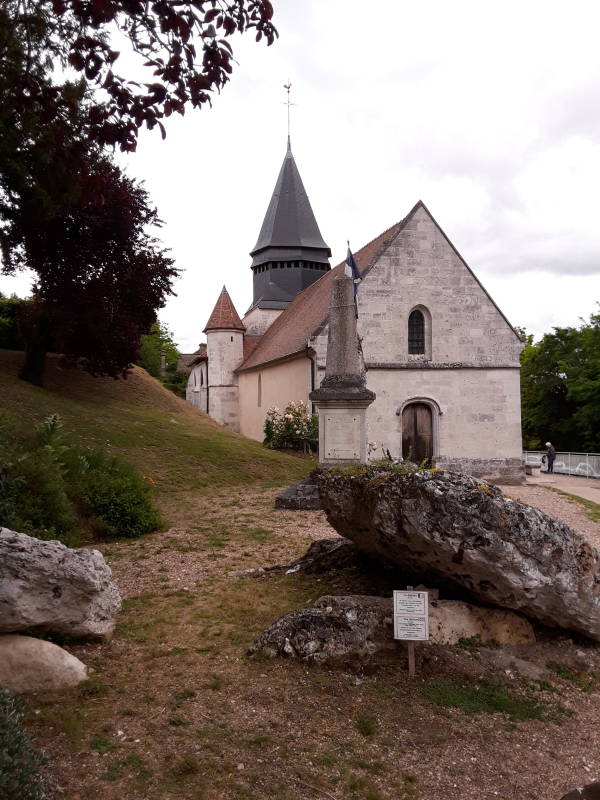
Claude Monet's Home at Giverny
Claude Monet in Upper Normandy
Claude Monet lived in a number of places between Paris and Rouen, in Haute-Normandie or Upper Normandy. But he is most associated with his home and gardens in Giverny, where he lived for the last 43 years of his life.
Giverny makes for an easy day trip out of Paris. There is a train about every hour in each direction between Paris' Gare Saint-Lazare and the station in Vernon. Giverny is such a popular destination that the Vernon station is listed as Vernon-Giverny.
Mont-Saint-MichelOver a half-million people visit Giverny each year, it's the second most visited site in Normandy after Mont-Saint-Michel.
From Vernon to Giverny
A shuttle bus connects the Vernon station with Monet's home, synchronized with the trains. Or, it's a pleasant one-hour walk. Two of the GR or Grande Randonnée (or long-distance paths) connect Vernon and Giverny. I walked, below I'm about to cross the bridge over the Seine.
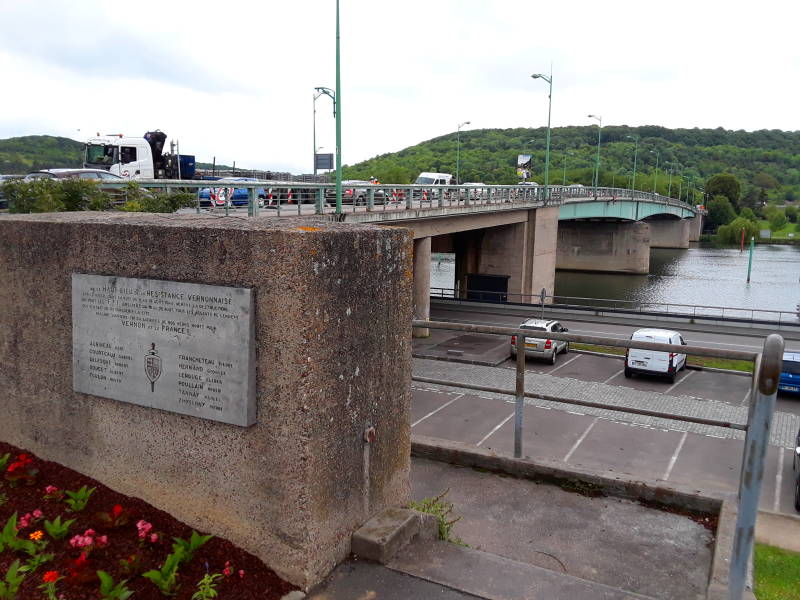
Landings French
Resistance
A marker at the Vernon end of the bridge explains that it's a replacement. The French Resistance blew up the bridge on the night of 18-19 August 1944, to hinder German movements to counter the Allied advance from the Normandy landings. They then fought off German attempts to recapture Vernon from 19 to 25 August.
11 members of the F.F.I. from Vernon were killed in the fighting.
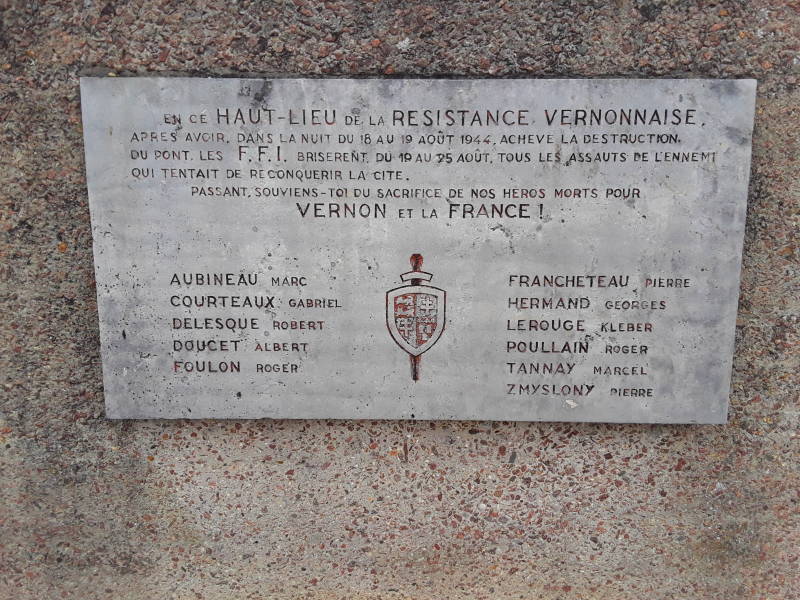
There's a memorial to the dead and missing in the Indochina War (1945-1954) at the other end of the bridge.
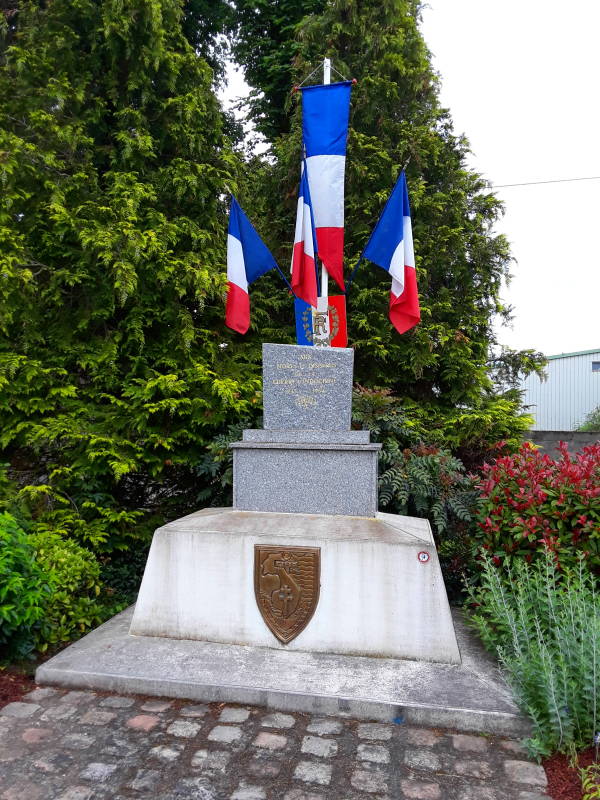
A broad, smoothly paved path follows the river bank. It's very nice for walking, running, or bicycling. There is exercise equipment along the way.
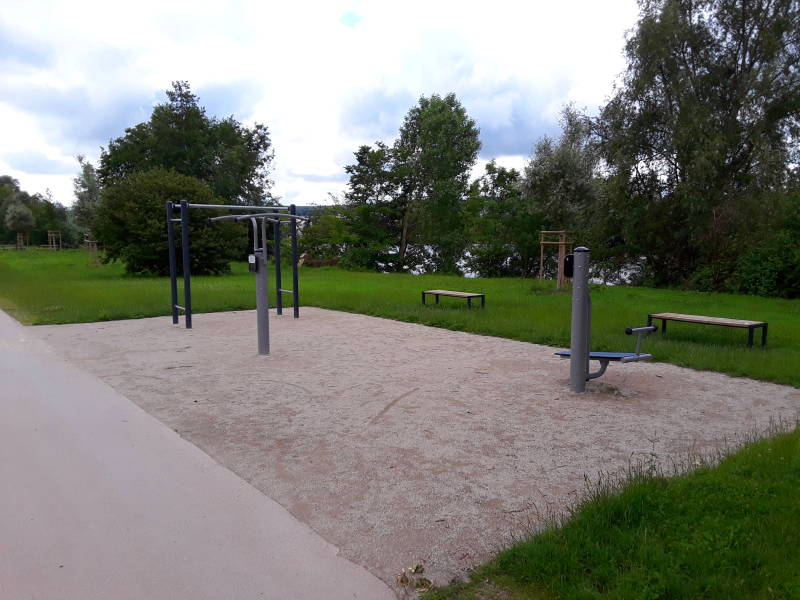
Monet made many paintings of the Seine, in varying weather and lighting conditions.
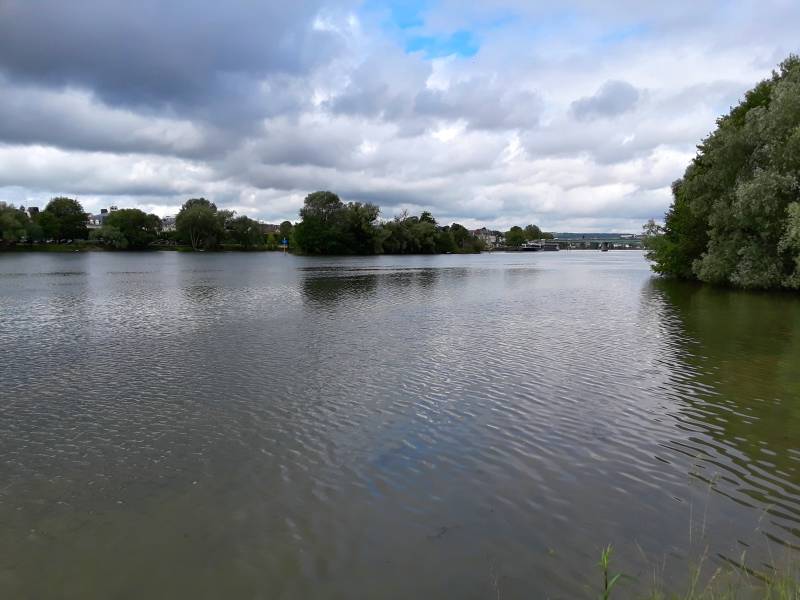
Amazon
ASIN: B00B2JZAH6
Amazon
ASIN: 3836551012
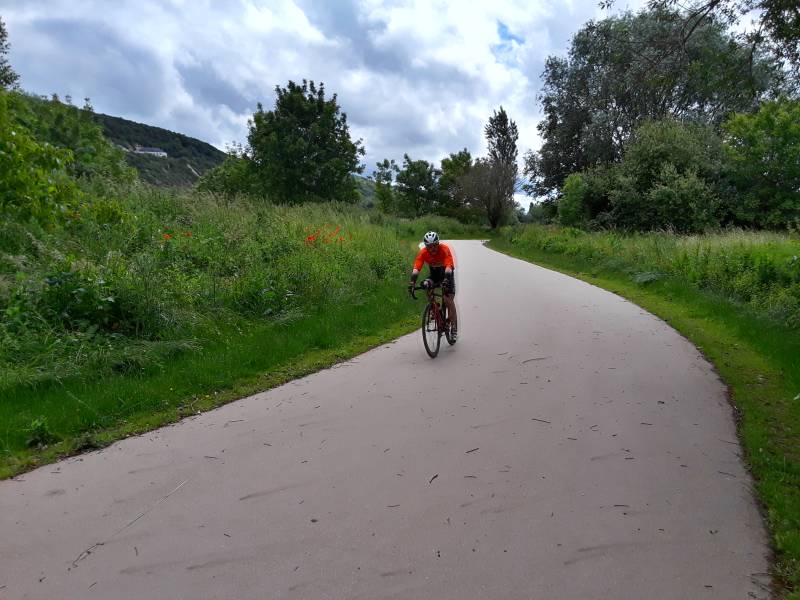
Yes, there's some light industry along the Seine at Vernon. But then the Impressionists frequently painted factories, smokestacks, and smoke-filled train stations.

Amazon
ASIN: B07H3NHHN8
A chalky ridge parallels the Seine.
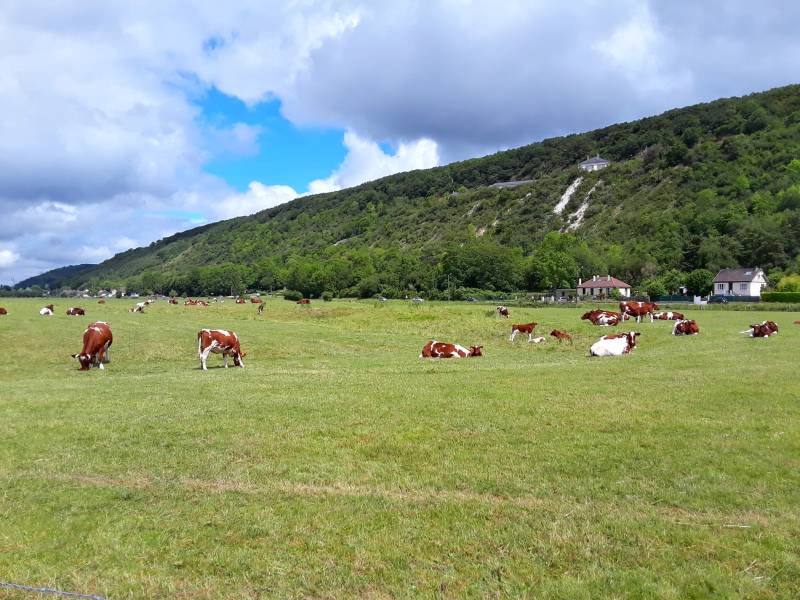
The Ru is a stream that feeds into the Epte, itself a tributary of the Seine. We're getting close, Monet diverted some of the water from the Ru to flow through his water garden.
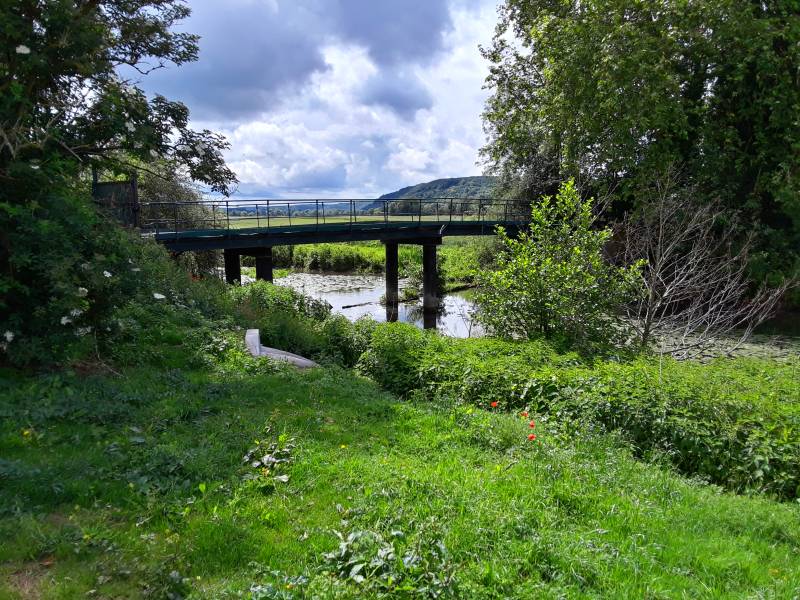
The path follows a former rail line that once passed Giverny. Monet was riding a train on that line when he spotted Giverny and decided to live there.
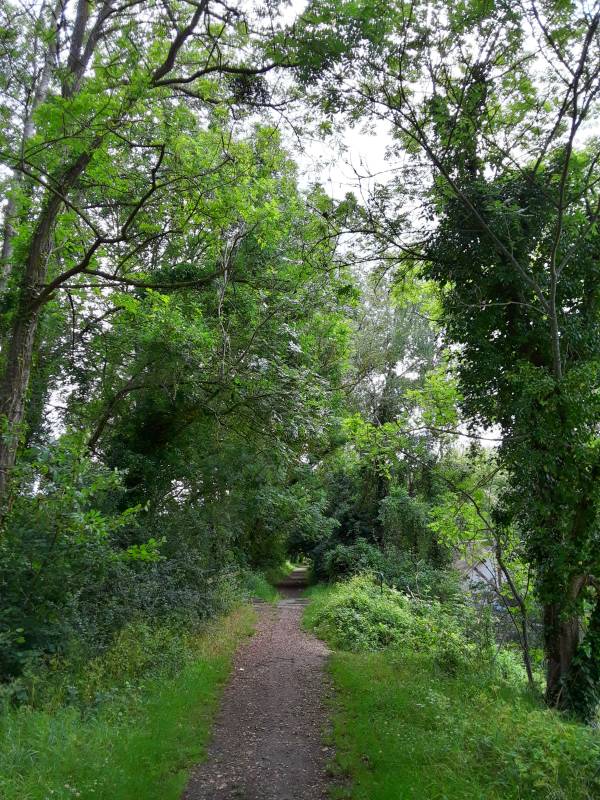
The town of Giverny is small. About 300 people lived here when Monet moved here in 1883, and its population has only grown to about 500 today.

Affairs of an Artist
The cast of characters and relationships in Monet's life are confusing. They don't get into the scandalous details at his house, which leaves you wondering who were these variously named people living in the bedrooms.
Ernest Hoschedé was a wealthy department store owner and art collector. In 1876 he commissioned Claude Monet to paint decorative panels for the Château de Rottembourg, plus several landscape paintings.
Claude Monet began an affair with Hoschedé's wife, Alice. Monet very likely was the father of her youngest son, Jean-Pierre.
Ernest Hoschedé went bankrupt the following year, 1877. Ernest and Alice Hoschedé and their children moved into a house in Véthuil with Claude and Camille Monet and their children. Yes, the two couples and their children, complete with the ongoing affair between Claude and Alice. Ernest began spending most of his time in Paris, and soon moved there before leaving for Belgium in 1878. I can't say that I blame him.
Camille Monet was diagnosed with uterine cancer later that year, and died in September 1879. Can uterine cancer be caused by rage? The seething rage wouldn't help. Claude kept living in the house with Alice. Then Alice took the two Monet boys with her to Paris to live with her six children, while Claude stayed at Vétheuil.
In the spring of 1880 Alice and all the children returned to Vétheuil. In 1881, Claude, Alice, and the children moved to Poissy, now an industrial outer suburb of Paris at the end of a branch of RER Line A. By this time, Ernest had refused to pay his share to support Alice and her children.
In April 1883, Monet was riding the train to Vernon, near the Seine between La Roche-Guyon and Les Andelys. The train passed through the small village of Giverny. Monet immediately decided that he wanted to live there.
By the end of 1883, Monet, Alice, and all the children had moved first to Vernon, and then into a large house in Giverny. He rented the house and surrounding land, until 1890 when he had enough money to buy it. Monet lived there until his death in 1926.
Étretat andFécamp
Ernest showed up from time to time at the Monet—Hoschedé homes in Vétheuil, Poissy, and Giverny. Monet would leave the house during these visits, describing himself in letters as greatly distressed, having nightmares, and unable to paint. In one of these episodes he was on his last painting expedition to Étretat when Ernest visited Giverny for Alice's birthday. He described himself as "annihilated" and obsessed with thoughts of Alice.
Ernest showed up at Giverny in 1886 and demanded that Alice return with him to Paris, but she refused and stayed with Claude.
In 1891 the inconvenient Ernest Hoschedé finally died, and Alice agreed to marry Claude the following year.

Giverny
The house is pink with bright green porch, shutters, and trim. Pink and bright green. That sounds garish, but it looks nice. The fully saturated colors continue inside, with bright yellow walls and furniture in the dining room, bright blue tiles in the kitchen, and over 200 Japanese prints throughout the house. Who am I to question Claude Monet's color choices?
The large house is long and narrow. Its back side is along a small lane. The front looks out onto a large garden.

Claude's bedroom was upstairs at the north end of the house, with two large windows looking out over the garden and one looking to the north. The two open windows in the below picture are in his bedroom.
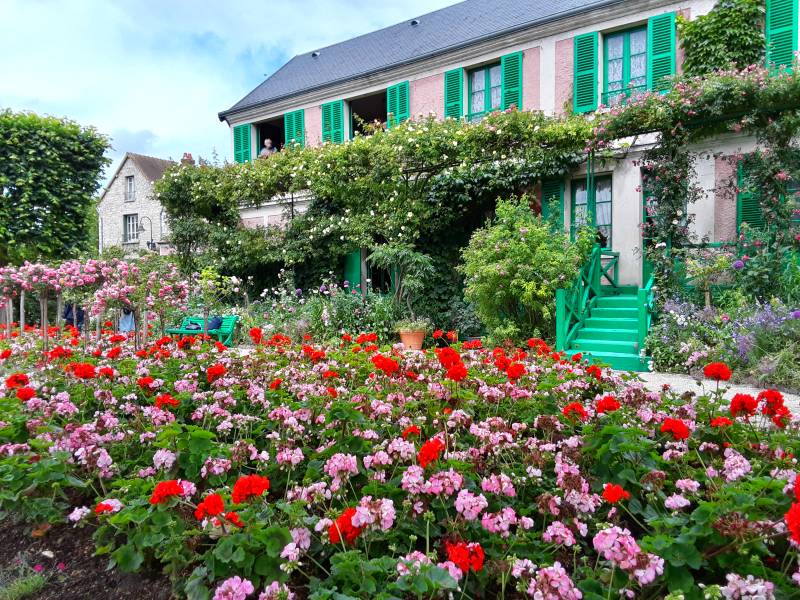
Inside the House
He used the room at the north end of the ground floor as a study and studio. His paintings are now in top museums around the world, and some private collections. The foundation that maintains the home commissioned art students to paint reproductions of some of his most famous works, which hang in this room. It's a "greatest hits" collection, not intended to capture the state of the room at any one time.
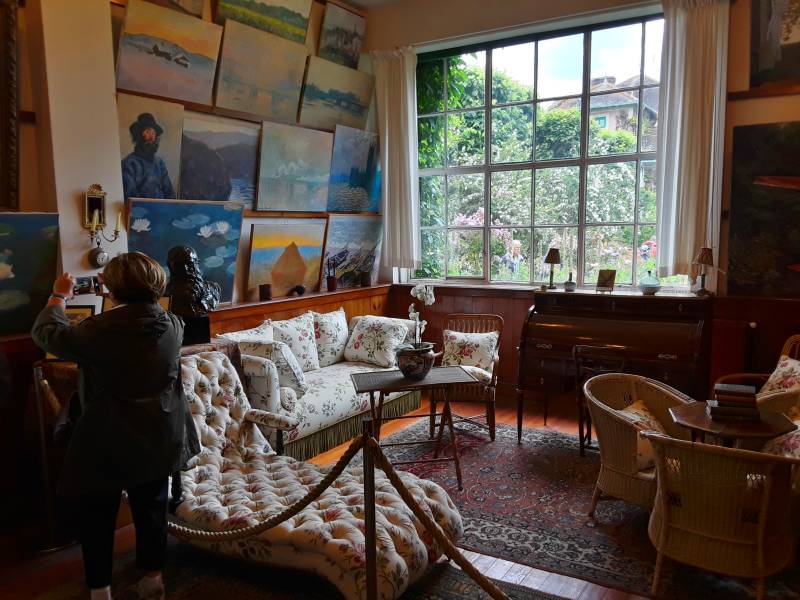
Much of the house has walls almost covered with Japanese prints. Many are by Hiroshige.
Several of the Impressionist artists collected Japanese prints.
The fascination goes both ways. Matsukata Kōjirō became the president of Kawasaki Shōzō, the Kawasaki Shipbuilding Company, in 1896, and then the head of Kawasaki Dockyards in 1916.
He bought thousands of pieces of Western art on his travels through Europe, especially in Paris. He hoped that his collection could establish a museum in Tokyo. He hoped that the residents of Tokyo could then see great art as easily as the residents of Paris could.
Matsukata became close friends with Claude Monet. It's said that once when he visited Monet here in Giverny, Monet offered to sell him anything he wanted. Matsukata bought 18 paintings.
My visit to the National Museum of Western Art in Tokyo My visit to the"Wedded Rocks"
at Ise, Japan
Matsukata only brought a few pieces to Japan before World War II, as there was a 100% tax on imported artworks. He stored some of his collection in Britain, where most of that was destroyed by German bombing during World War II.
He had stored much of his collection in Paris. It was seized as war reparations at the end of World War II. 14 pieces have remained in France, filling gaps in their national collection of works by Monet, van Gogh, Cézanne, and others. France agreed to give the rest of the collection to Japan in 1951, after the signing of the Treaty of San Francisco, contingent on the construction of a proper museum. The National Museum of Western Art was established in Tokyo's Ueno Park in 1959.
Below is Hiroshige's view of the "Wedded Rocks" at Futami, near Ise.
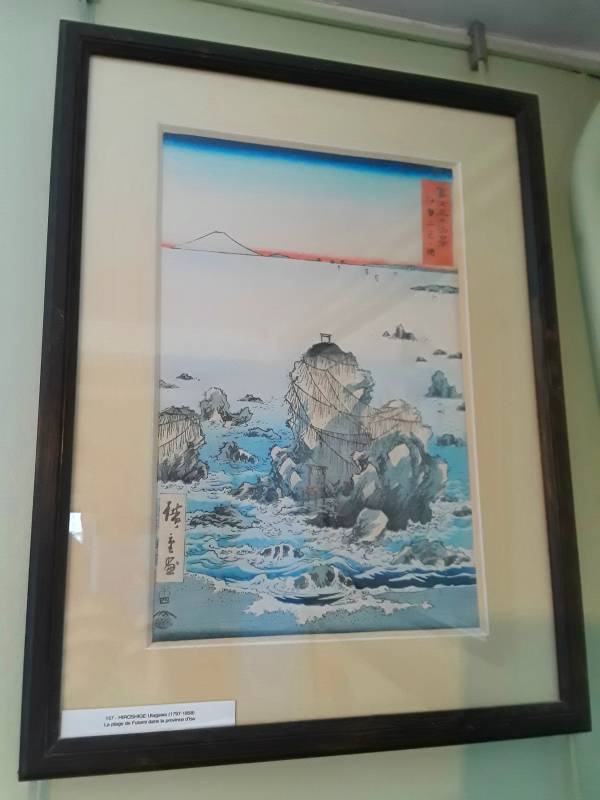

Going upstairs, we reach Claude Monet's bedroom.

His bedroom overlooks his garden. This is the Clos-Normand. Monet spent years transforming this garden into a living painting based on his artistic vision.
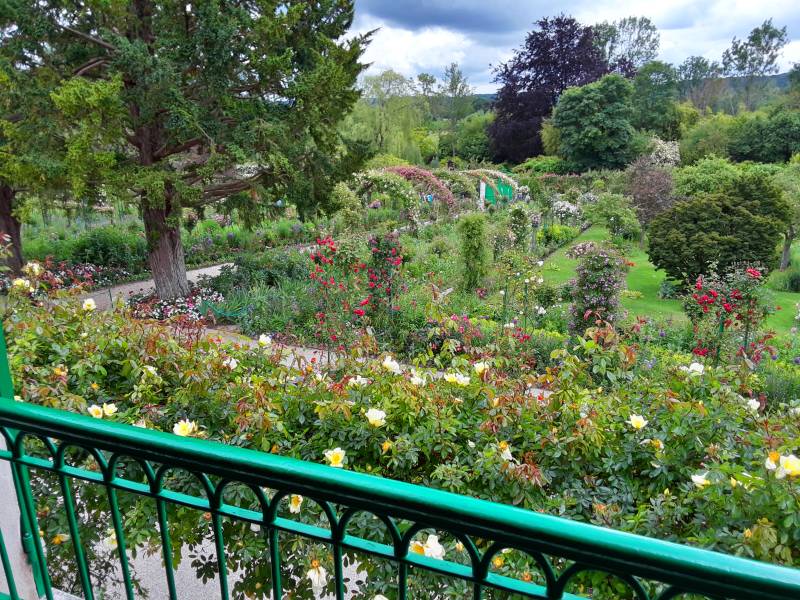
Bathroom
Upstairs there's a narrow hallway along the back side of the house. The rooms connected with each other. Below is Claude's bathroom.
The Impressionist painters traded works back and forth. The French art students were also commissioned to paint reproductions of other Impressionist works, recreating the interior of the house as it was documented in photographs and letters written by visitors.
Yes, Monet had some Paul Cezanne paintings hanging in his bathroom. Doesn't everyone?
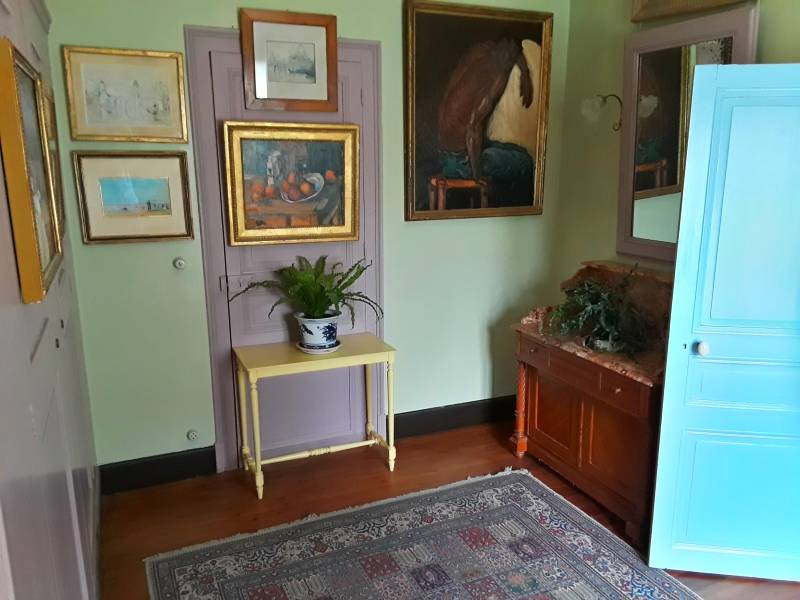
The marble-topped wooden counter is his sink. There's a potted plant in the sink. It appears that his bathroom was plumbed with running water and a drain, but there was no toilet. It was still the age of chamber pots.

Alice's bathroom didn't have running water, she would have stepped into Claude's bathroom to fill her water pitcher.
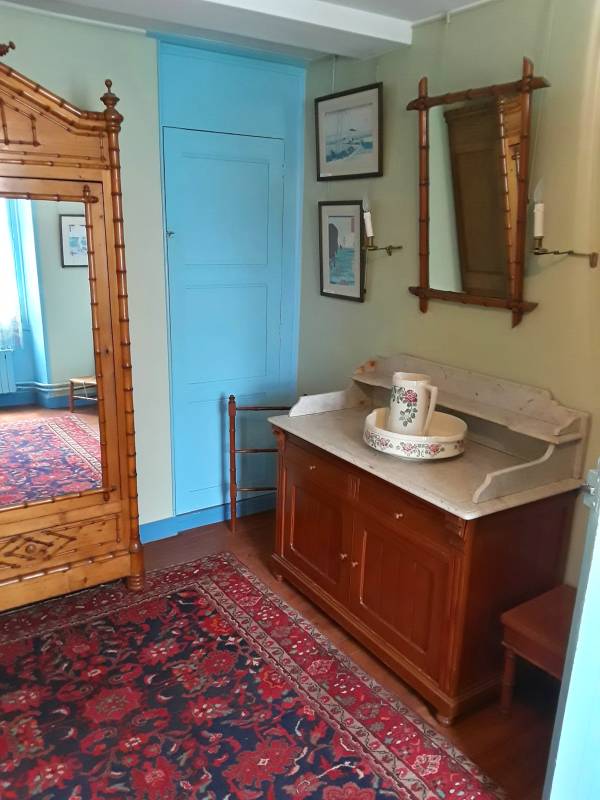
Blanche Hoschedé-Monet was the last family member to live in his house. Yes, one of Alice's daughters married one of Claude's sons, they were raised like siblings but weren't related by blood. She lived here until her death in 1947. After that, the gardens were untended.
The last family member died in 1966, leaving the house to the Académie des Beaux-arts. Restoration didn't start until 1977, when the house and garden had been neglected for decades. It opened to the public in 1980.
"Sleeping Cat" at Tōshō-gū, at NikkōThere's a ceramic "Sleeping Cat" in front of the fireplace. This is based on the famous carving at Nikkō, in Japan. That's the Nemuri-neko or, literally, Sleeping Cat. It's said to have been carved by Hidari Jingorō, an artist who may or may not have existed during the early Edo period, when the Tokugawa Shōgun really ruled the country.
OK, someone carved the sleeping cat. But the artist persona of Hidari Jingorō might be a fiction.

Downstairs, the dining room is done up in yellow paint and more Japanese prints.
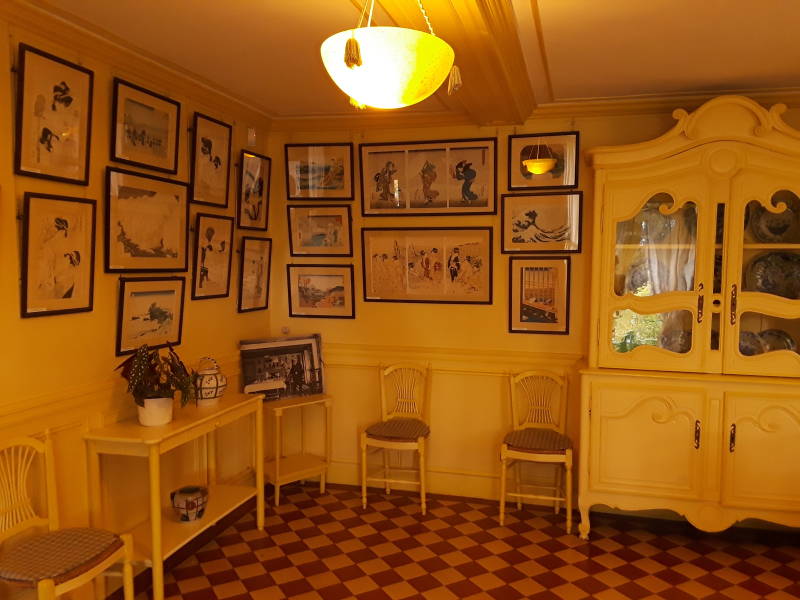

There's another "Sleeping Cat" in the dining room.
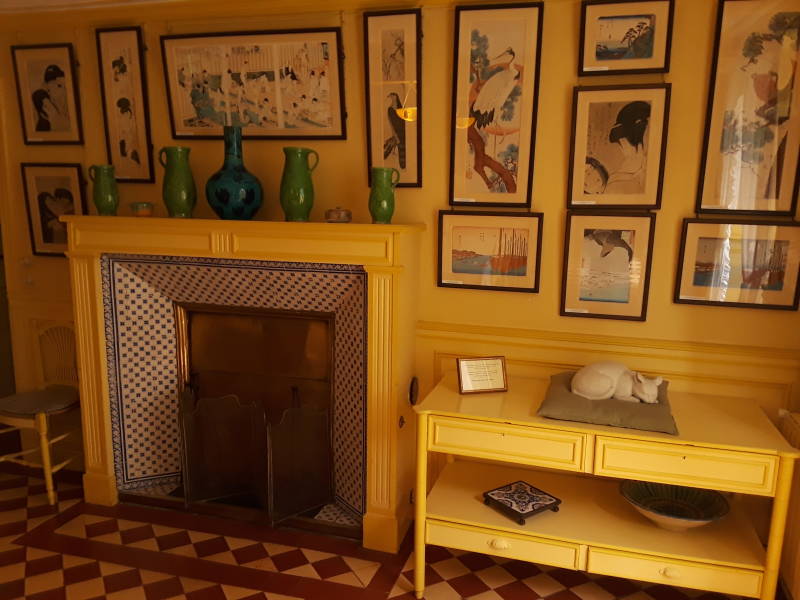
Bright yellow inside, fully saturated green outside. It's Claude Monet's house, I am not going to question anything.
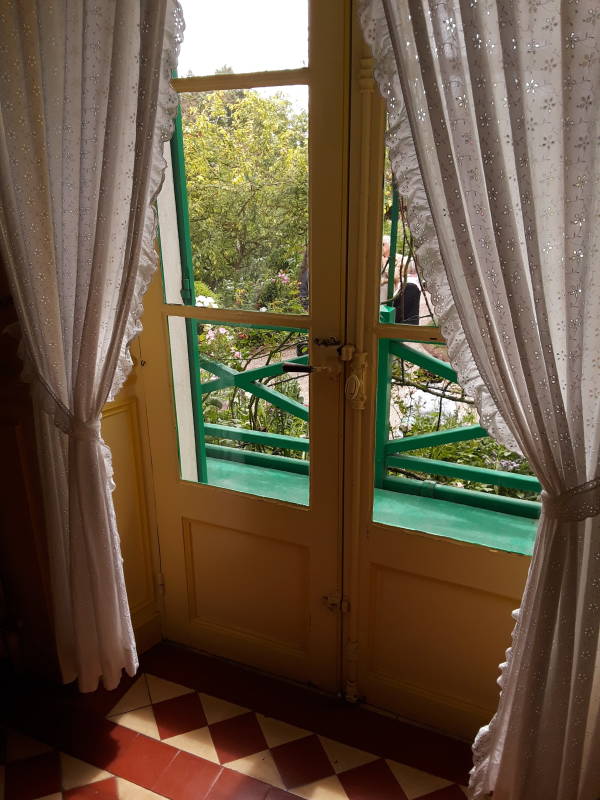
Then the kitchen is very blue. The tiles are from Rouen, a later stop down the Seine if you're following this sequence of pages.
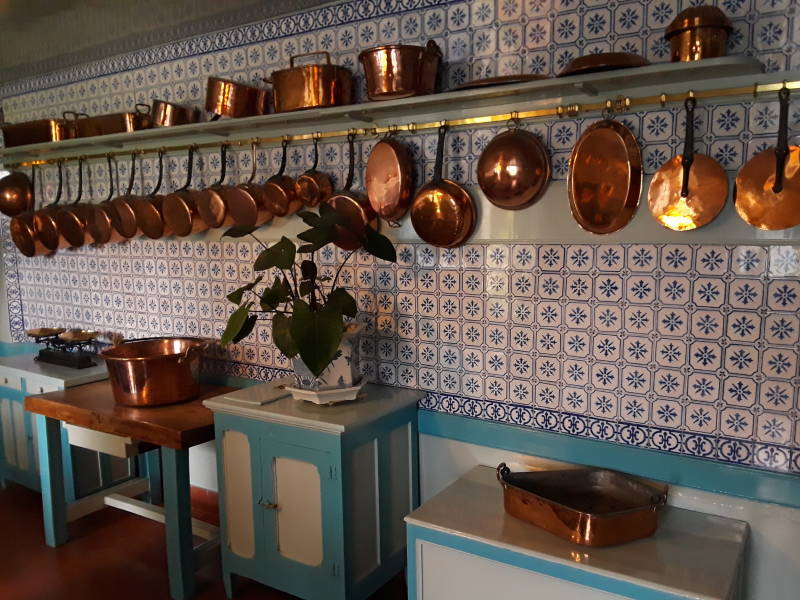
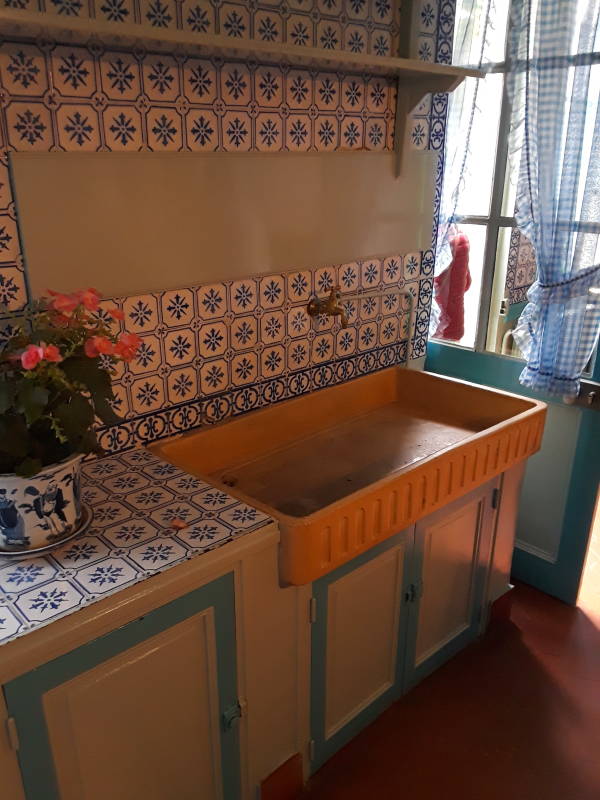
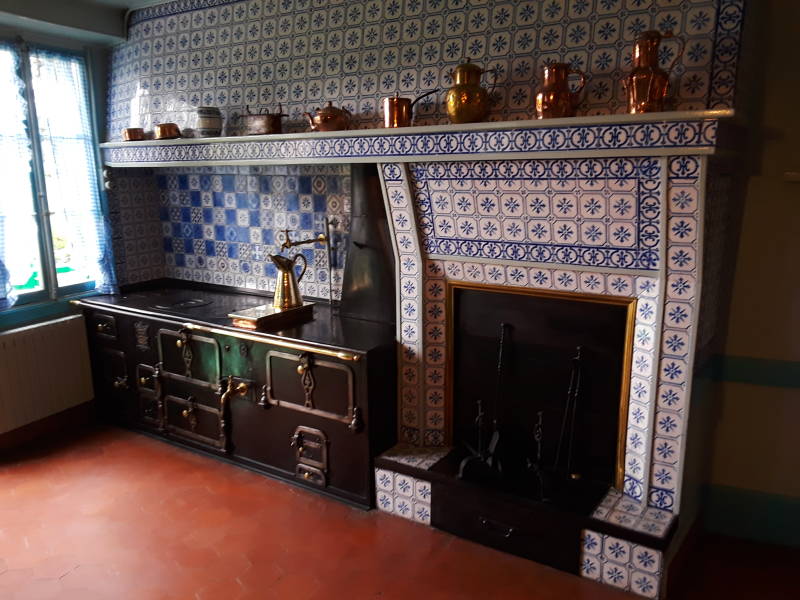

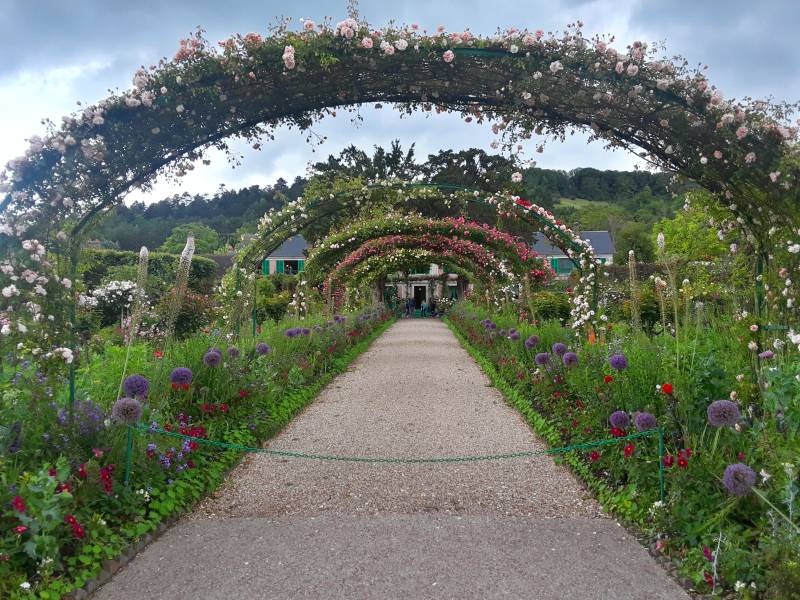
The Water Garden
Once he owned the property, Monet began building the gardens. In 1893 he purchased a vacant piece of land adjoining the garden by the house. He diverted the Ru, a small branch of the Epte river. This forms the famous water lily ponds.
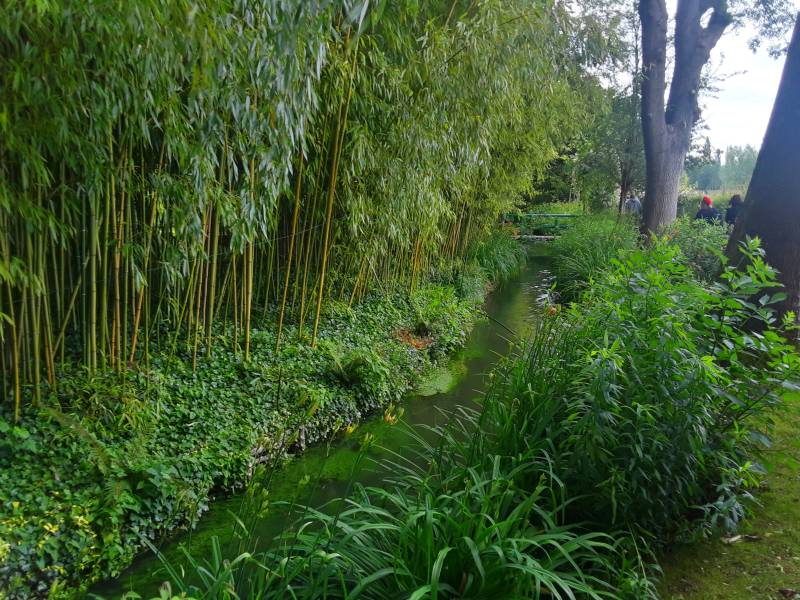
The water garden continued Monet's fascination with Japan. Many of the plants are from east Asia — bamboo and flowers. There are two small wooden foot bridges in a very Japanese style. And, the whole idea of a garden with planned specific points to take in a pleasant view is very Japanese.
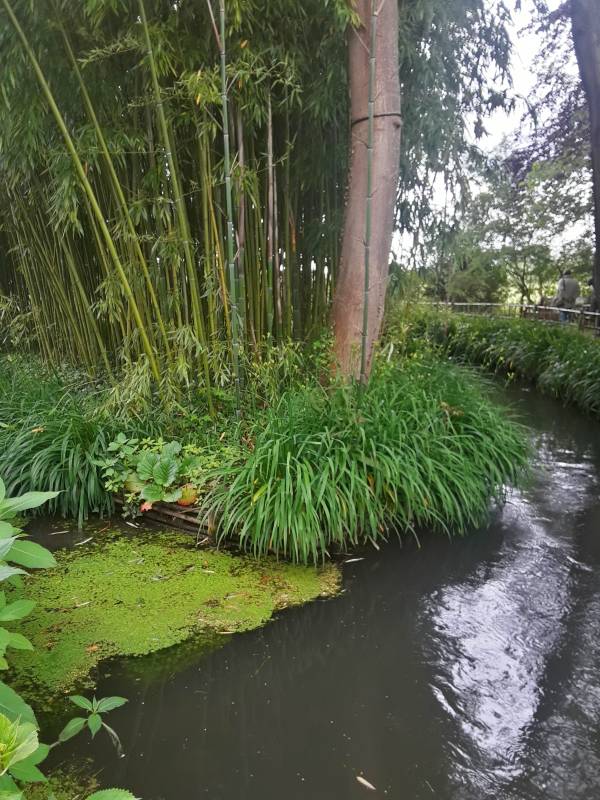

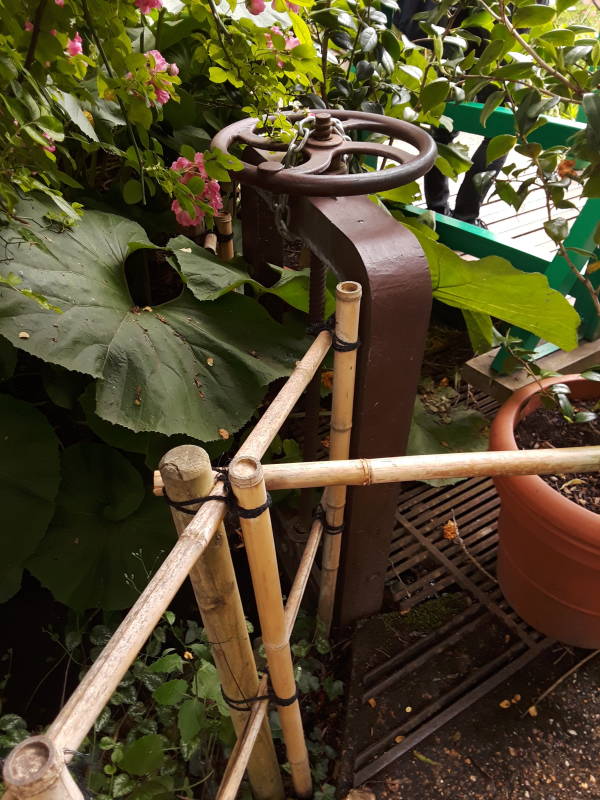
Monet had up to seven gardeners on his staff, including one dedicated to the water lilies.
There are still water lily specialists at Giverny.


Monet began painting the water lilies in 1899, first in vertical views with a bridge as the central feature.
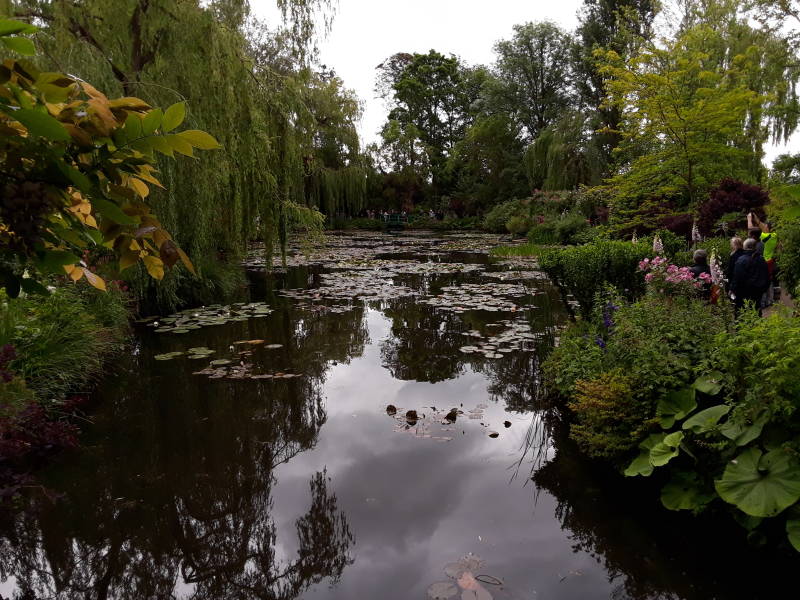
He then started working on a series of much more abstract paintings.

He continued working on the more abstract water lily paintings over the following 20 years.

A series of very large water lily paintings can be seen at the Orangerie in Paris.
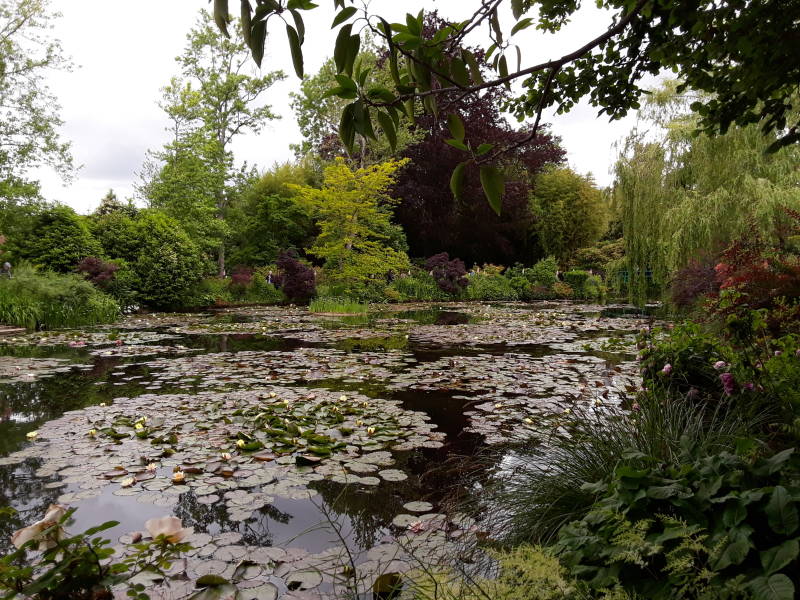
There are also large panels at the Museum of Modern Art in New York City.
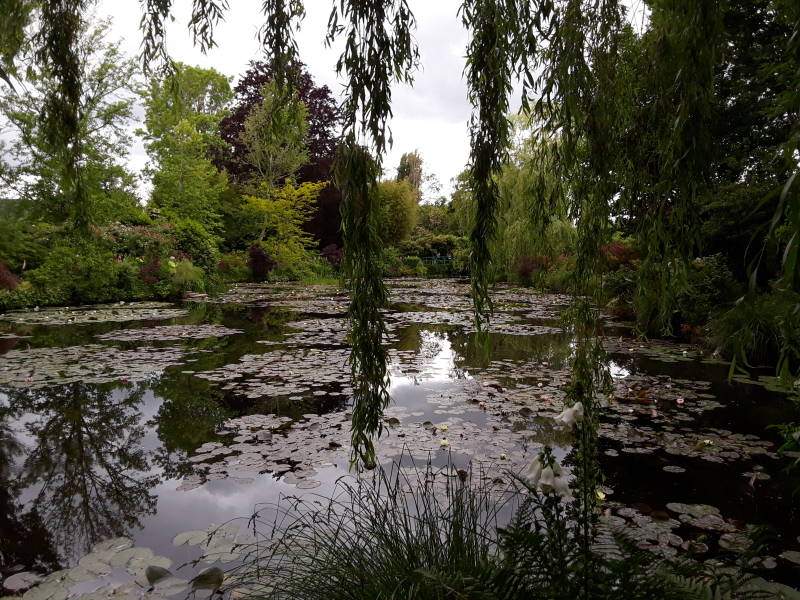
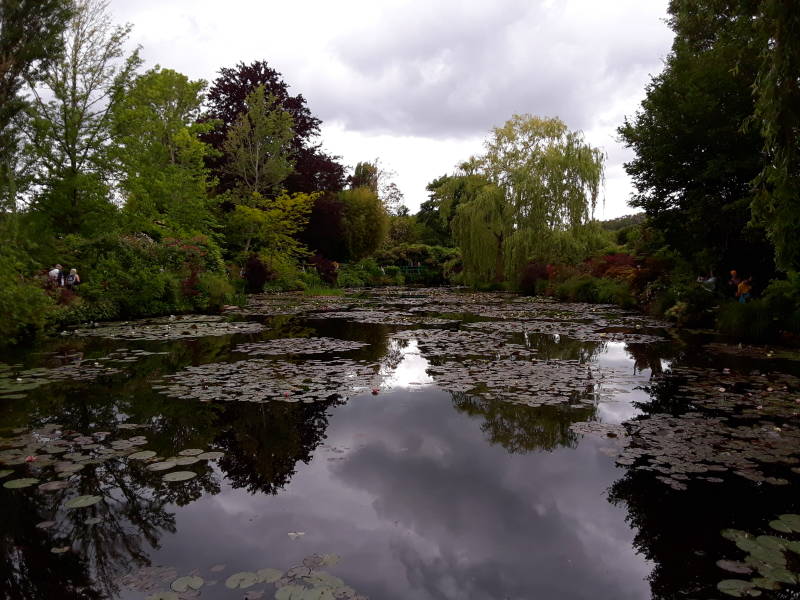
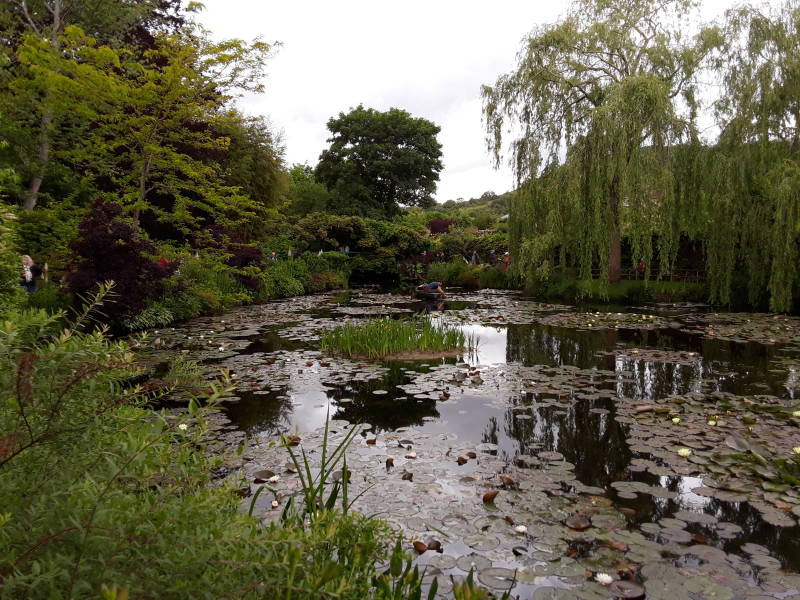
After the Garden
Walk through the village of Giverny, now mostly small art galleries and a few bed-and-breakfast places. In about 300 to 400 meters you come to l'église Sainte-Radegonde, the church of Saint Radegonde. The Monet family grave, among other sights, are found around the church, where the semi-circular choir was built in the 11th and 12th century.
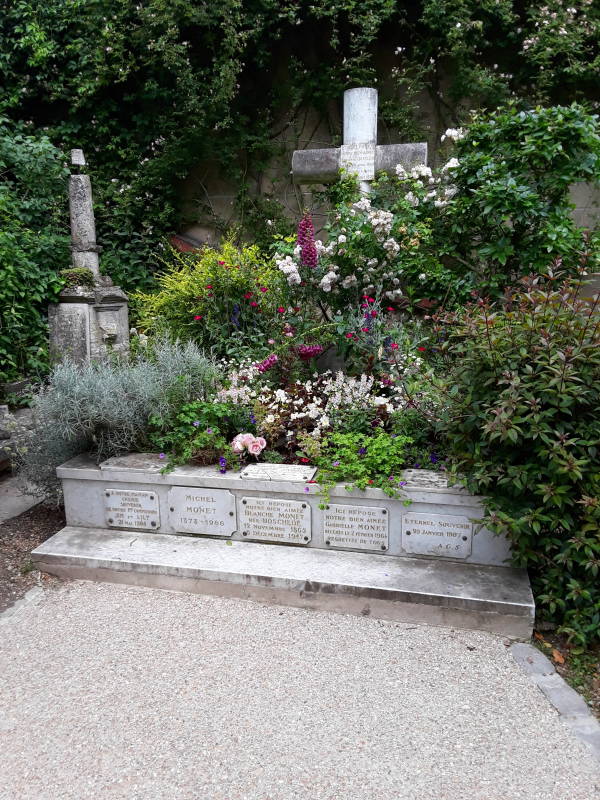
On the night of 7-8 June 1944, a Royal Air Force Avro Lancaster bomber crashed in the Plaine des Ajoux south of the village. I believe the crash site would be in the rich cropland between the village and the Seine, seen in the earlier pictures as I was walking from Vernon to Giverny.
The Avro Lancaster was a four-engined heavy bomber. Its long unobstructed bomb bay could carry the largest bombs used by the RAF.
All seven crew members died in the crash. They are buried together in the cemetery. You first pass a memorial made from a propeller blade from their plane, then the Monet family grave, and then within the cemetery their grave is prominent. The English side of the plaque at the memorial says:
During the night of the 7th and 8th of June 1944,
a Royal Air Force Lancaster bomber crashed in flames
to the south of the village.
This statue displays a propeller blade from the aircraft
to pay homage to the seven crew lying in our cemetery.
Their sacrifice led to our liberty today.
This monument stands in testimony to the crew and is a
symbol of the admiration and gratitude of the people
of Giverny.

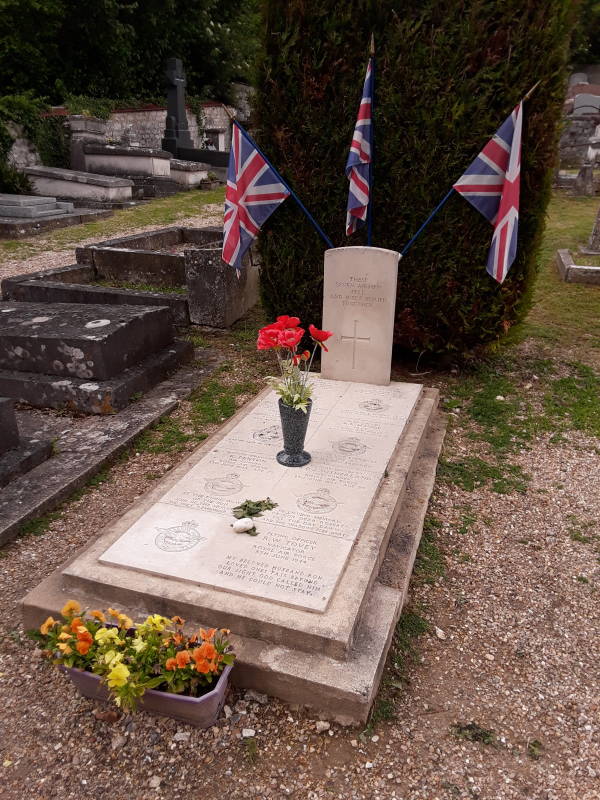
Dolmen
On your way out of the cemetery, you pass some large stones. Look closer. This is a dolmen, a megalithic burial structure from around 2000 BCE.
Local legend says that it was claimed as a Christian monument in 500 AD. Saint Radegonde is credited with curing skin diseases. So, of course, this megalithic structure is claimed to have done the same thing, some 2,500 years before the Christian saint was born. It remained mostly buried until 2015. What you see today is a jumbled remnant.
Continuing down the Seine...
Now we'll continue north along the Seine to Château Gaillard, built by Richard Lionheart during the Hundred Years' War.
